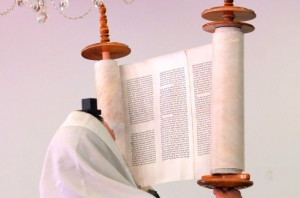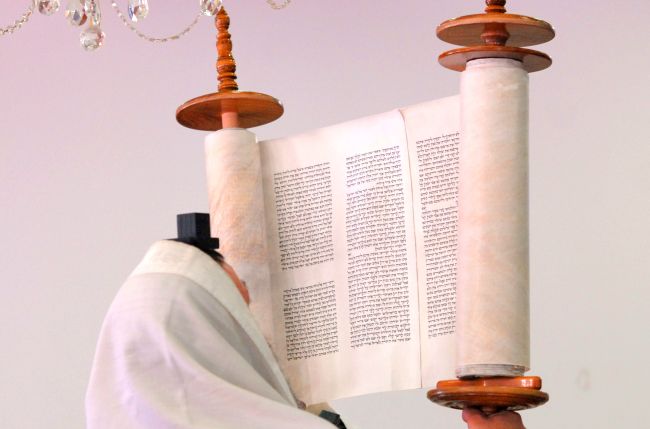
This week we read the parsha of T’rumah, which deals with the construction of the Mishkan {Tabernacle}. The focal point of the Mishkan was the ‘aron’, the ark, which contained the luchos {tablets upon which the Ten Commandments were written}. The root of the word ‘aron’ is ‘ohr’, meaning light. It contained the ‘light’ of the Jews and the entire world.
“V’asu aron atzay sheetim {And you all shall make an aron of sheetim wood}.[25:10]”
The Kli Yakar points out that by the other vessels, Moshe was commanded “va’a’sisa,” and you shall make. Here the Torah says “va’asu,” and you all shall make. This teaches that every single member of Klal Yisroel has a part in the Torah. Va’asu-and you all shall make. The aron, that which contains the light and essence of all Klal Yisroel, belongs to each and every individual.
Why was wood chosen as the principal component of the aron?
“It (the Torah) is a tree of life for those who uphold it. [Mishlay 3:18]” Shlomo HaMelech doesn’t describe the Torah as only being a tree of life for those who learn it. Rather, it is a tree of life for those who uphold it. As we stated above, everyone has his or her unique share and connection to Torah. For some it is through their own personal learning and teaching, for others it is through the support that they lend to those involved in Torah. Both are doing their share in upholding the Torah. It is the wooden box of the aron, this tree of life for those who uphold it, which avails the Torah to all. Va’asu-and you all shall make.
“And you shall cover it with pure gold, inside and outside you shall cover it. [25:11]”
The Kli Yakar goes on to explain that the gold that covered the wooden box of the aron on the inside symbolized the hidden part of the Torah and the gold on the outside symbolized the revealed part of the Torah.
Rashi explains how the aron was actually constructed. Three boxes were made, two of gold and one of wood. The wooden box was placed inside a golden box (thereby covering the outside with gold) and then the second golden box was placed inside the wooden box (thereby covering the inside with gold).
The Vilna Gaon points out that this seems to contradict the passuk {verse} which stated that first “inside” and then on “outside you shall cover it!”
He explains that there is really no contradiction between the order of the passuk and the manner that Rashi explained the construction. By putting the wooden box into a golden box, the inside of the gold (of that outer box) was covering the wood. When the second golden box was put inside, the ‘outer’ gold (of that inner box) was actually covering the wood. In other words, the passuk’s reference of inside and outside is not referring to the wooden box itself but to the inside and outside of the golden boxes covering that wooden box.
Why did the passuk describe it in such a manner?
As we stated above, the outer box represented the revealed aspect of Torah and the inner box, the hidden aspect of Torah. In regard to the revealed part of Torah, the person (represented by the wood) can actually touch the inside; he can get down to the true depths. The inner part of the outer box of gold covered and touched the wood.
However, when it comes to the hidden aspect of Torah, there a person can only hope to reach the outside of that body of knowledge and only after having reached the depths of the revealed aspect of Torah. As the passuk states, after the inner part of the outer golden box (the depths of the revealed Torah) covered the wooden aron, only then did the outer part of the inner box (he hidden aspect of Torah) touch and cover the wooden aron.
Where does this leave the group of those who uphold the Torah that we mentioned above? Are those not actively involved in actual learning or teaching Torah considered to be bereft of this gold?
“And you shall make poles of wood, covered with gold and these shall be placed in rings on the side of the aron in order to carry the aron. In these rings of the aron the poles shall be, never to be removed. [25:13-15]”
If the purpose of these poles was simply to transport the aron, why weren’t they removed once the aron had been positioned in its proper location? Why is there an explicit prohibition against ever removing these poles?
The Chofetz Chaim explains that these poles (covered with gold) represent those who lend support to the Torah. They uphold and carry the Torah. A person might mistakenly think that such people are deserving of honor while being actively involved in this support. However, once their support is no longer needed or they are no longer able to contribute, perhaps they are no longer deserving of this honor. Does their act of support fundamentally change who they are and render them sanctified individuals even after such acts are no longer forthcoming?
That is the lesson taught to us by these poles. They attain the same level of kedusha {holiness} as the aron. They are never to be removed. The aron is situated alone in the Holy of Holies-those poles are also in the Holy of Holies.
The Chofetz Chaim goes on to say that the unbreakable connection between the ‘supporters’ and the ‘learners’ actually is an eternal bond. They will ‘sit’ together in the next world and take pleasure in the same spiritual heights.
The story is told that there was a stormy halachic {Jewish law} dispute involving Rav Chaim Volozhiner and other great scholars over an aspect of shatnez {forbidden mixture of wool and linen}. During that time, someone who he had known to be a simple person in his lifetime but had been an avid supporter of the scholars approached Rav Chaim Volozhiner in a dream. Rav Chaim asked him what the heaven’s opinion was in regard to the shatnez debate. This person responded with a detailed, in depth analysis of the entire topic which was far beyond what he had been able to comprehend in his lifetime.
The poles are never to be removed from the aron. “It is a tree of life for those who uphold it. [Mishlay 3:18]”
Good Shabbos,
Yisroel Ciner
This week’s parsha-insights is dedicated in mazel tov to Howie Hershkovich and Martha Vays in honor of their upcoming wedding. May they be zocheh to much happiness together and to build a bayis ne’eman b’Yisroel.
Copyright © 1998 by Rabbi Yisroel Ciner and Project Genesis, Inc.
The author teaches at Neveh Tzion in Telzstone (near Yerushalayim).


